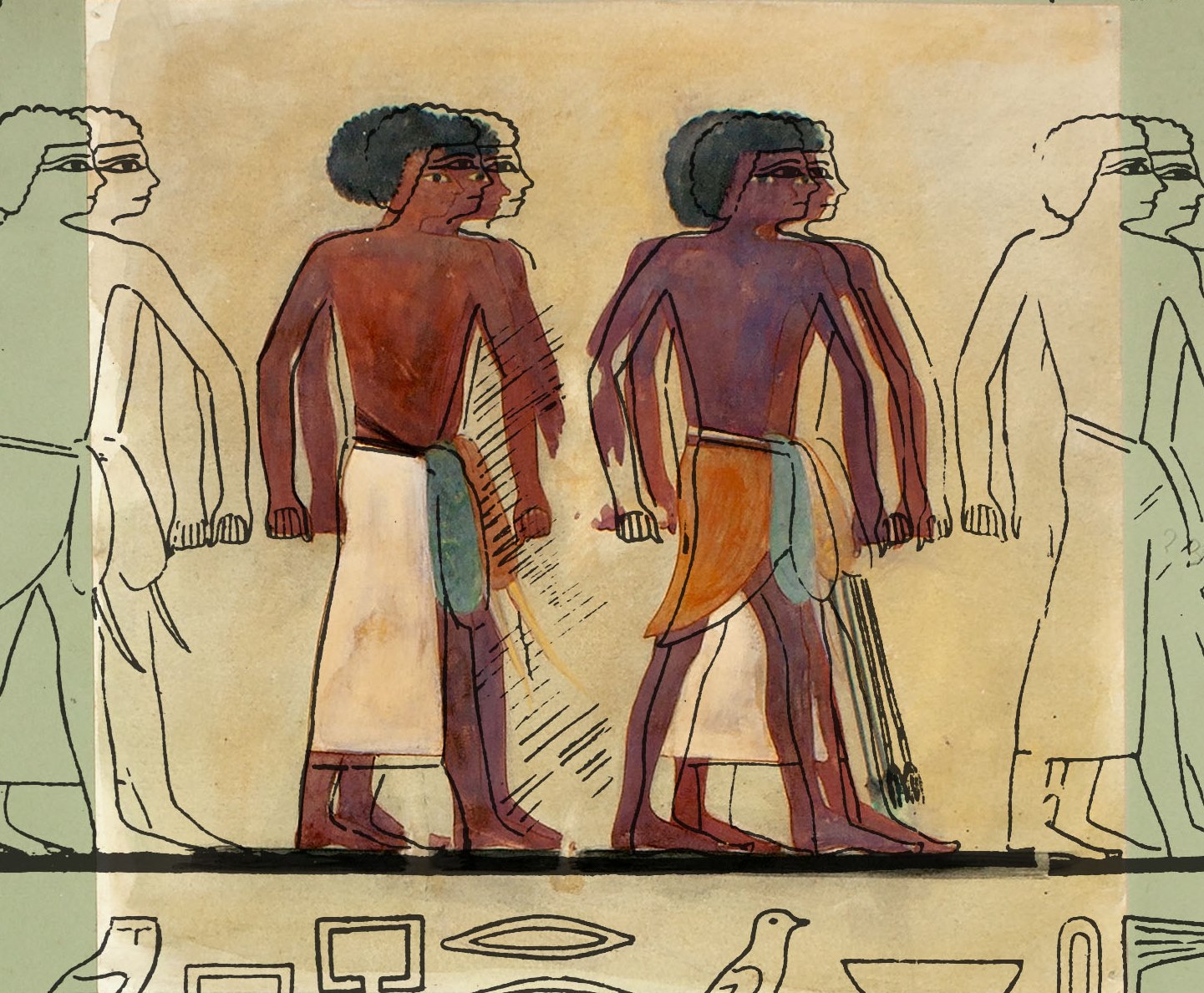The Tomb of Djehutihotep at Deir el-Bersha. Hall. West Wall.
Upper scene | "Transport of the Colossus"
Reconstruction with Griffith Institute Watercolours
The famous scene from Djehutihotep's tomb illustrates well the reasons why the ancient Egyptians were so successful in manoeuvring and building such impressive monuments, which were accomplished by the combination of knowledge, skill and necessary man-power, the latter provided by a willing workforce drafted in especially for the task rather than an army of slaves so often portrayed in books and films.
In the top register there are groups of men carrying palm-fronds who are celebrating the arrival of the colossus which is being moved from the ancient quarry at Hat-nub, where it was created, to its final destination, probably adjacent to an entrance doorway within a sacred complex, most likely at nearby el-Ashmunein (Hermopolis Magna), although no trace of this colossus has yet been identified at this site or elsewhere in the vicinity.
The colossus has been placed on a wooden sledge for transportation with four ropes for towing secured to it; teams of forty-three hauliers are assigned to each rope, and within each of the teams the men are working together in pairs stationed at regular intervals along the length of the rope; a single haulier leads the team and is carrying the end of the rope. The hauliers are gliding the sledge over a layer of carefully prepared sand, and there is some speculation about the significance of the man pouring water in front of the sledge: he was originally thought to be offering a libation as part of a ceremony, but it has been recently proposed by physicists that the ancient Egyptians understood that if a certain amount of water is added to sand, it significantly reduces the amount of friction generated by the dragging of such heavy loads.
|
Griffith Institute w&d 153, 154 [upper] and 154 [lower] & Newberry, P. E. El Bersheh i, pl. xv (line drawing)
© Griffith Institute Watercolours & Drawings Project | Deir el-Bersha |
Enlarge Powered by Zoomify |
We are indebted to our Griffith Institute Research Volunteers, Lee Young and John Wyatt, who compiled the catalogue for these watercolours, and also to Dr Jaromir Malek, former Keeper of the Griffith Institute Archive, who initiated the cataloguing and digitization of this collection. Helen Murray, the first Keeper of the Archive, accessioned, numbered and arranged the watercolours in their present order.
The digitization of the watercolours was carried out by Jenni Navratil, the Institute's Digital Imaging Officer, assisted by Hana Navratilova. Francisco Bosch-Puche, Alison Hobby and Cat Warsi have all made significant contributions to all stages of this project. Elizabeth Fleming edited the final catalogue and designed the web page content.
A special thank you is extended to our colleagues at the Egypt Exploration Society in London for permission to use the line drawings published in Percy E. Newberry's El Bersheh i, The tomb of Tehuti-hetep [1894].





